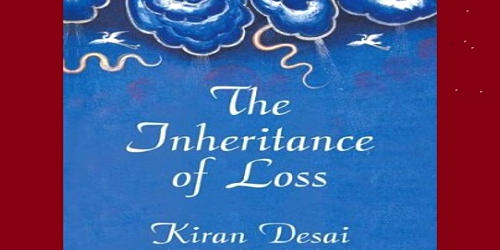The inheritance of loss: Book Review
The 2006 Booker Prize “The Inheritance of Loss” is Kiran Desai’s second novel. Kiran is the daughter of Anita Desai who had been nominated for the Booker prize but did not bag the prize. It took Kiran seven years to complete her award-winning novel and she used her own personal experiences of an Indian living in the United States to write her novel.
The story is set in the mid-1980s in a Himalayan town in India by the foot of Mount Kanchenjunga and New York.
The novel focuses on the lives of Jemubhai Popatial, a retired Cambridge-educated judge living in Kalimpong, his orphaned granddaughter, Sai who moves to live with him and his cook.
The peaceful fabric of their lives is disturbed when a Nepalese insurgency disturbs the region. Jemubhai becomes vulnerable because of his penchant for hunting rifles, the one sport he indulges in.
To add to the intricacies of the novel, the revolution threatens the blossoming relationship between 16-year-old Sai and her Nepalese tutor, Gyan.
The lives of these four main characters are intertwined with the story of the cook’s son, Biju. He experiences the negative aspects of life as an illegal migrant in New York.
Kiran chooses not to formally introduce her characters to the readers but instead weaves them into her flashbacks. Then she constantly introduces minor characters. Her individualistic style sometimes makes it difficult for readers to engage with the characters and the readers need to concentrate or lose track of characters and events and in the end, the plot itself.
The pace is fairly fast and Kiran draws on the different characters’ stories, sometimes going back in time and then bringing the readers back to the present day of the novel. The readers have to be attentive to the plot or will lose the flow of the storyline.
The book is beautifully written. Every word has been carefully selected giving the text an overall thoughtful and thorough description. However, there is an overemphasis on descriptions so much so that in some places the plot is overshadowed by an overdose of words. Then again, Kiran has the ability to write lines that are thought-provoking, This is often at the end of the chapter to allow the readers to pause and think about the implications before proceeding with the text. In her writing, Kiran seems to be conveying a message to the readers about the importance of things in life. Kiran tells us not to overlook the simple implications of life. “Time should move. Don’t go for a life where time doesn’t pass”.
Throughout her novel, Kiran touches upon many different issues such as globalization, multiculturalism, inequality, and the different forms of love.
The teenage readers can look through the eyes of the 16-year-old heroine, Sai. Maybe the introspective teenagers can comprehend the complexities of adulthood and an unequal borderless world that is constantly “shrinking”. I would recommend this novel to the introspective teenagers but for those who are not into “serious” stuff, I suggest you give this book a miss.
In conclusion, the Asian element in English fiction has been taken on another literary ride in this multicultural, multilingual universe, making it a universal trait.
















